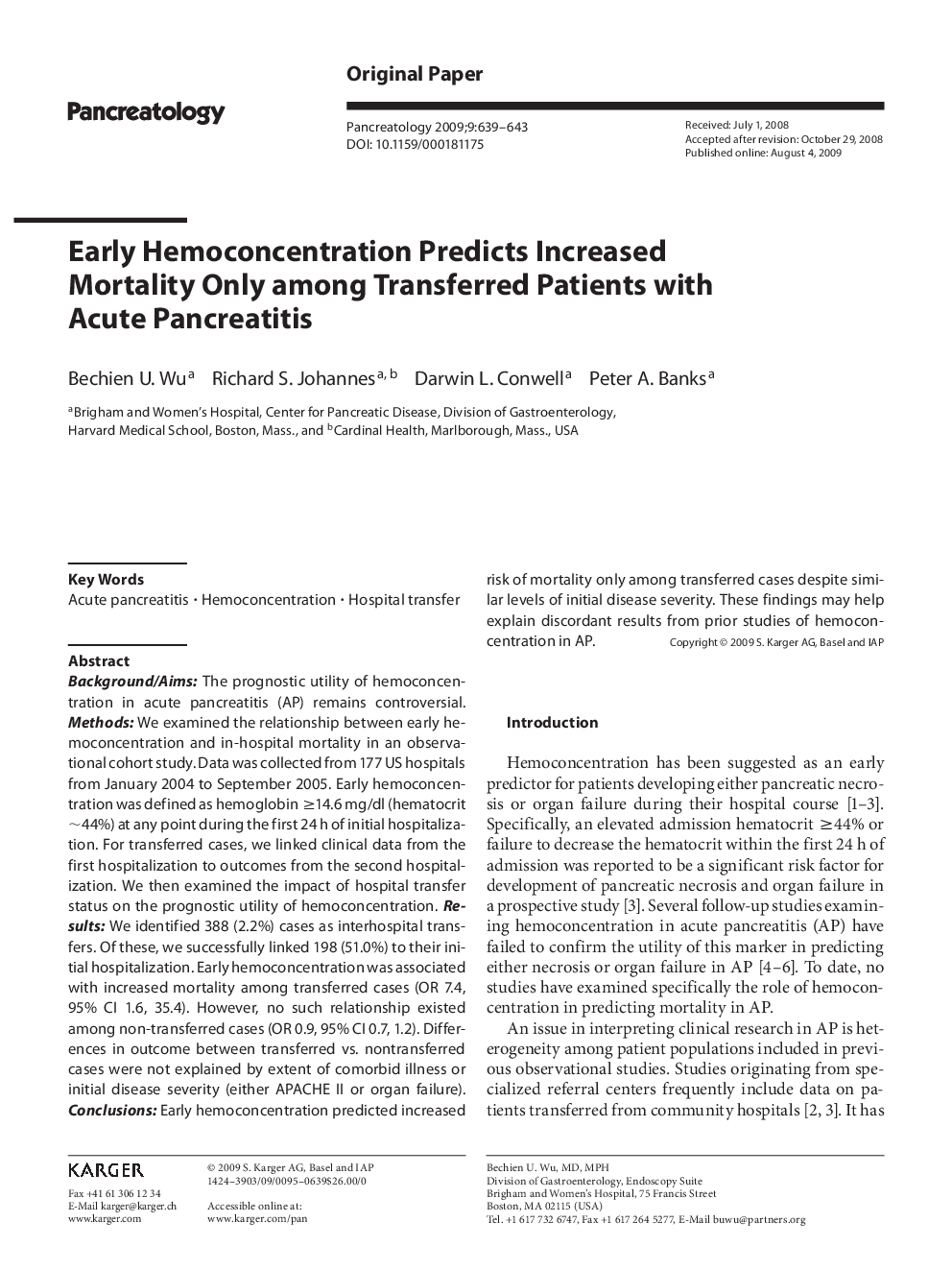| Article ID | Journal | Published Year | Pages | File Type |
|---|---|---|---|---|
| 3318264 | Pancreatology | 2009 | 5 Pages |
Abstract
Background/Aims: The prognostic utility of hemoconcentration in acute pancreatitis (AP) remains controversial. Methods: We examined the relationship between early hemoconcentration and in-hospital mortality in an observational cohort study. Data was collected from 177 US hospitals from January 2004 to September 2005. Early hemoconcentration was defined as hemoglobin â¥14.6 mg/dl (hematocrit â¼44%)atany point during the first 24 h of initial hospitalization. For transferred cases, we linked clinical data from the first hospitalization to outcomes from the second hospitalization. We then examined the impact of hospital transfer status on the prognostic utility of hemoconcentration. Results: We identified 388 (2.2%) cases as interhospital transfers. Of these, we successfully linked 198 (51.0%) to their initial hospitalization. Early hemoconcentration was associated with increased mortality among transferred cases (OR 7.4, 95% CI 1.6, 35.4). However, no such relationship existed among non-transferred cases (OR 0.9,95% CI 0.7,1.2). Differences in outcome between transferred vs. nontransferred cases were not explained by extent of comorbid illness or initial disease severity (either APACHE II or organ failure). Conclusions: Early hemoconcentration predicted increased risk of mortality only among transferred cases despite similar levels of initial disease severity. These findings may help explain discordant results from prior studies of hemoconcentration in AP.
Related Topics
Health Sciences
Medicine and Dentistry
Gastroenterology
Authors
Bechien U. Wu, Richard S. Johannes, Darwin L. Conwell, Peter A. Banks,
